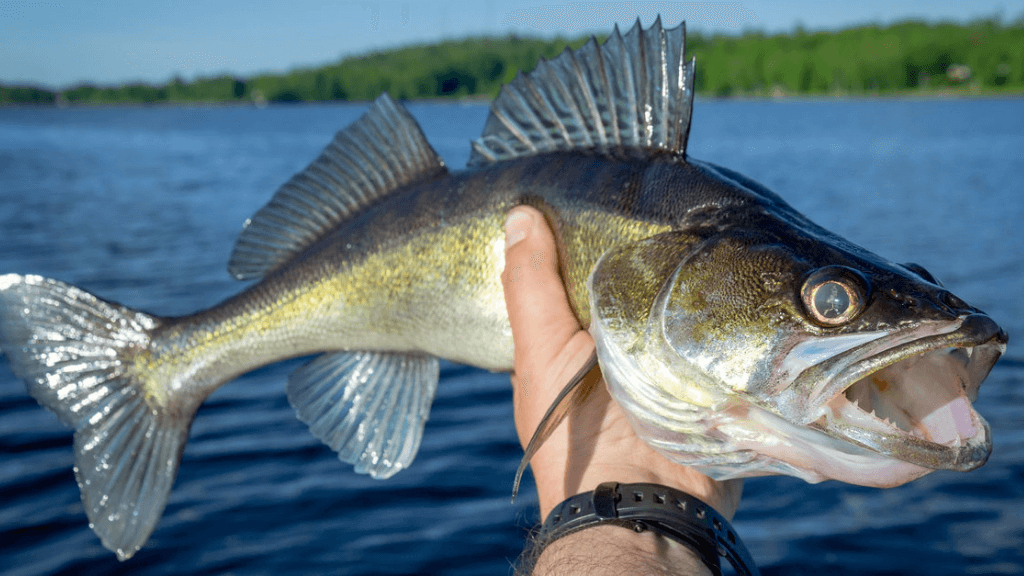Walleye is a highly sort after table fish.
So how do you go about chasing these delicious and fun-to-catch fish?
Keep reading if you’re ready to learn some top tips and tricks on how to catch walleye.
About Walleye
First, it’s important to understand your target species.
Walleye are native to Canada and much of the Northern United States. They are a sought-after freshwater species in the Midwest, Upper-Northeast, and Upper-Northwest.
They can be caught year-round by boat or from the shore. In the north, they are also a prime target for ice fishermen in the winter.
Walleye are only carnivorous, feeding on smaller fish, leeches, and worms. They are usually dark green on the back, which fades to a yellowish or white belly, but can also have hints of blue mixed in.
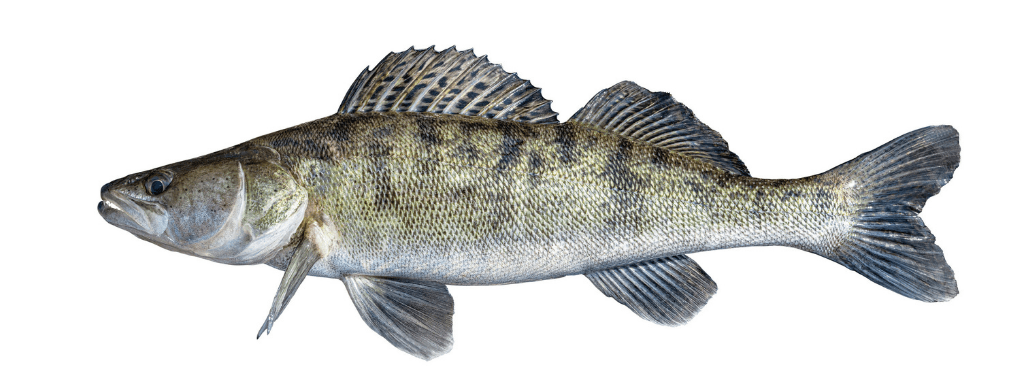
They are a member of the perch family. The walleye is named for its large pearlescent eye, which is caused by a reflective layer of pigment that helps them feed at night and in murky water.
As walleye see well in poor light they tend to feed in low-visibility conditions. They favor dusk, night, murky water, on cloudy days, and when the surface of the water is being disturbed by the wind.
The key to catching more walleye is to fish in low light and find the baitfish that will attract these predators. When you find their prey, you’ll find walleye cruising nearby. Knowing what color is most visible to a walleye fish will also help improve your chances.
Walleye are safe to eat, and most fishermen target them for consumption rather than for trophies.
Where to Catch Walleye
Walleye like structure. They like to position themselves around structures that they use for ambush points and navigation. Areas like shoreline points and mid-lake humps are the key to finding baitfish and the ensuing walleye.
As walleye have incredibly keen eyesight, they often ambush their prey. They like sneaking up on less perceptive fish in murky, dark, or turbulent waters. Enter the “walleye chop.”
Experienced walleye fishermen are known to chase the “walleye chop”. A period of small-height waves induced by wind or other factors (like boating and other watersports). The chop kicks up sediments in shallow waters where walleye feed. This reduces their prey’s vision and puts them at a disadvantage.
The rocky points are your primary location for spring, deeper mid-lake humps in summer, and insect breading flats in the fall.
Walleye like to eat things on the bottom re¬gardless of depth or location. So, your bait needs to be presented around 6 inches to 2 feet off the bottom to be in their strike zone.
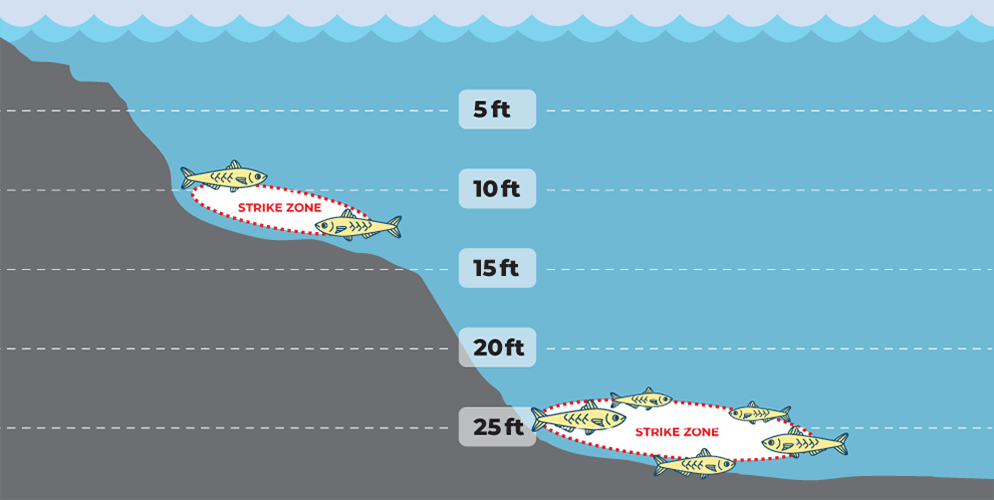
When to Catch Walleye
Walleye typically feed once the sun sets, moving from deeper, more central waters to shallow shores, weed beds, and small islands. They will follow a daily cycle, bedding down in deeper waters during the day and feeding in the shallows after sunset.
As with most fish species, walleye behave differently throughout the year. Each season brings unique fishing opportunities and challenges
The best walleye fishing tends to be in May and June. That’s when walleye are in shallow or semi-shallow locations near shore, making them easier to catch. Walleye tend to move to deeper locations as water temperatures rise throughout summer.
Spring: Spawning Splendor
Walleye spawn in the spring, so they’re likely to congregate in shallow waters with a smooth bottom.
Female walleye are generally bigger than their male counterparts, but you are less likely to snag one during spawning season. They’re generally distracted by spawning activities. They spend more time protecting their eggs and are less likely to dedicate time to feeding.
Summer: Slim Shallows, But Not Slim Chances
Since they prefer cooler water, walleye spend more time in deeper, darker water during the summer to avoid the heat. But, that doesn’t mean that the shallows are empty.
If you want to wrangle a walleye in the summer you should try night fishing and overcast days.
Fall: The Ideal Walleye Season
As temperatures cool down, walleye become more active.
Cool outdoor weather makes excellent walleye fishing weather. Grab your rod and tackle box, throw on a rain jacket, and enjoy a chilly dusk on the water fishing for a monster walleye!
As always, target feeding areas on cooler, cloudy days or at night for a shot at a big walleye.
Size and Quantity Limits for Walleye
Each state’s hunting and fishing regulatory agencies will stipulate different rules for walleye. Both the number of fish you can harvest and the size fish must be to keep.
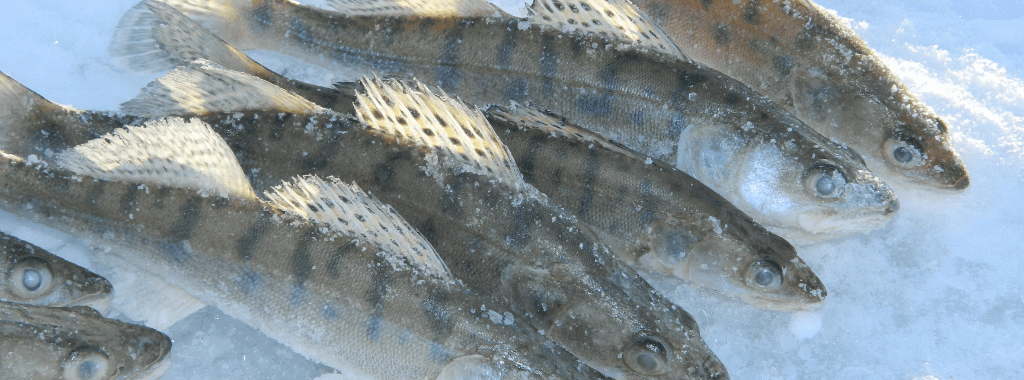
Be sure to review your state’s guidelines before starting your fishing excursion. Some states also require certain equipment to be kept on the boat while it’s in operation, so be sure to follow those regulations as well.
Some common rules for walleye fishing are as follows:
● Michigan
○ Fish must be a minimum of 15 inches in length
○ Anglers may keep five walleye per person
○ Different bodies of water and different regions of Michigan have different walleye seasons.
● Tennessee
○ Fish must be a minimum of 16 inches in length
○ Angler may keep five walleye per person
○ While these requirements mostly apply statewide, some bodies of water have additional restrictions for size, species, and possession.
● North Carolina
○ Walleye caught in different regions of North Carolina have different minimum length requirements.
○ Walleye also have different quantity limits depending on the region.
○ Make sure to check the fishing regulations in your region before launching the boat.
These aren’t the only states where anglers can find walleye. This list shows the diversity of rules and regulations surrounding the species. So be sure to check the rules in your jurisdiction and comply.
How to Catch Walleye
Learning how to catch walleye can be challenging for new anglers.
In the following section, I’ll explore the gear to catch walleye, the best bait for walleye, and some walleye fishing techniques. You’ll find that there are many “right” ways to do everything, so experimentation is key.
I encourage new anglers to try a variety of rigs, baits, and techniques to develop a successful walleye process. Trial and error is part of the fun when learning how to catch walleye!
Gear to Catch Walleye
Rod & Reel
A medium-action spinning rod and reel with a six- to 10-pound pound line will work fine. If you want to get really serious about your walleye fishing then Elliott Fishing Rods make a great selection of high performance spinning rods.
Make sure that the reel you choose has a nice smooth drag. This is necessary when doing battle with these feisty fish.
A combo of this nature will allow you to work jigs and light cranks which are the two most common lures for targeting walleye.
Line
Some anglers prefer using braided line but monofilament is a popular option. It offers forgiving stretch, plus it’s readily available and inexpensive. You will be able to easily fish both live baits and lures with this setup.
Don’t use an exorbitant weight rating. After all, it’s unlikely that you’re ever going to reel up a walleye over 25-pound, so you don’t need to use a heavy line.
If anything about your rig looks unnatural, you’re just going to spook your target.
Hook
Most walleye fishermen use a jig or a circle hook, depending on the bait used.
For live bait (like minnows), a circle hook is ideal since setting the hook is such a breeze. But, be sure to read local regulations for inland fishing, as circle hooks are prohibited in certain regions.
Rigs
A rig is great for presenting your bait at the right depth. You can use them with live bait and fluorocarbon leaders that are almost invisible in water.
The most popular walleye rigs are the slip bobber rig, the live bait rig, and spinner rigs.
Different techniques are required for each, but all three can be used to fish large areas of water.
Slip Bobber Rig
The benefit of the slip bobber rig is it enables you to fish at a wide range of depths. Plus you can quickly change your fishing depth in response to different conditions.
A slip bobber is a floating device that slides up or down the fishing line. It is usually rigged with a bobber stop above it, and a weight below it. When cast out into the water, the weight pulls the line down through the slip bobber. This causes the slip bobber to slide up the fishing line until it reaches the bobber stopper.

You can use a slip bobber in depths over twenty feet but they really shine whenever targeting a piece of shallow structure.
Shallow rock reefs or bars that rise up from twelve to three feet of water are great. Any type of shallow structure that has debris on the bottom is perfect for the slip bobber presentation. This is because this rig lets you slowly drift your bait while staying above snags or other debris that can bust off your line.
Check out this great tutorial to learn more about using slip bobbers.
Live Bait Rig
This rig allows you to cover a lot of water like jigging. But, delivers the finesse presentation more commonly associated with the slip bobber approach.
A live bait rig usually has a slip sinker on the mainline, followed by a snell that has a swivel, length of line, and hook.
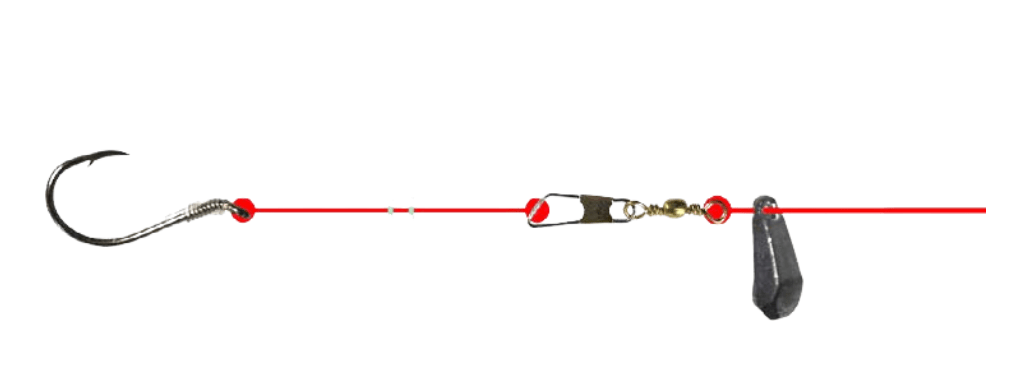
Most snells range from about 3 to 5 feet. This rig is fished along the bottom in areas where walleyes are present. In spring, target the sand and gravel drop-offs at the deep edge of bars at the mouth of creek arms.
Most walleye fishing in spring is in fairly shallow water. Also if its windy, walleyes will often move into the shallow.
Spinner Rig
Spinners, crawler harnesses, spin-rigs. No matter what you call them, spinner rigs are very common and effective in walleye fishing. They use color, flash, vibration, and scent to get a walleye’s attention and entice a bite.
Your standard spinner rig consists of a lead weight, 3’ snell or longer for clear water, a clevis, spinner, beads, and hooks with bait.
They can present live bait such as leeches, nightcrawlers and minnows along the bottom like lindy rigs. But you can also up the tempo and fish them more like crankbaits to trigger strikes.
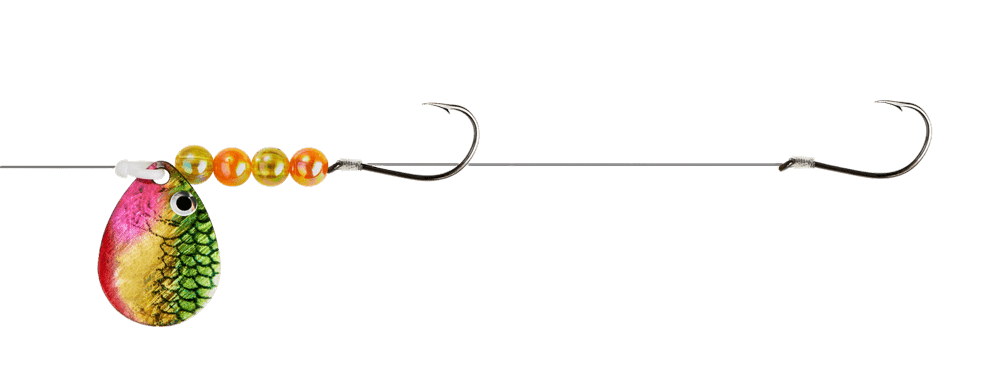
For speed, I like to go around 1.0 mph, to as fast as 1.8 mph, depending on what the fish are doing. Try driving over schools of fish at different speeds to see what they prefer.
Regardless of your rig choice, remember, if anything about your rig looks unnatural, you’re just going to spook your target. So focus on presentation to maximize your catch.
Best Bait for Walleye
There is a multitude of baits and lures that can be used to catch walleye.
If there are live bait in your region, use them. They’re organic-looking underwater and the most familiar prey for your target.
Minnows are a good choice, but be sure to hook them in a way that will allow them to continue swimming underwater. If mud minnows (which are a little bigger) are available in your area, try them! Walleye love a big bite, and mud minnows deliver.
You can also use earthworms, but use a syringe to inflate them with air before casting. This will help keep them slightly buoyant above the lake floor, making them easier for walleye to see.

Anglers can also use swimming baits, artificial lures that are scented to attract fish. Swimming lures are best when paired with a jig, while live baits are more useful with a circle or J hook since anglers won’t have to make them appear lifelike.
If live bait is not readily available or you’re targeting trophies, then lures are the way to go.
Jigs probably rank number one in popularity and fish-catching prowess. Jigs come in a variety of styles and sizes each catering to a different function or action.
Round-headed or ball-headed jigs are the most common purchase for walleye anglers.
Stand-up jigs are another excellent walleye bait. Their design enables the lure to “stand” vertically in the water column, which is an enticing trait for a hungry walleye looking for prey.
Have a few of these in your tackle box to use for flat bottom areas, or for the times when the fish are feeling finicky and you won’t go astray.
Crankbaits are a great choice because they catch heaps of fish, not just walleye. They mimic the action and look of the baitfish walleye feed on inciting a feeding response and attack that is second to none.
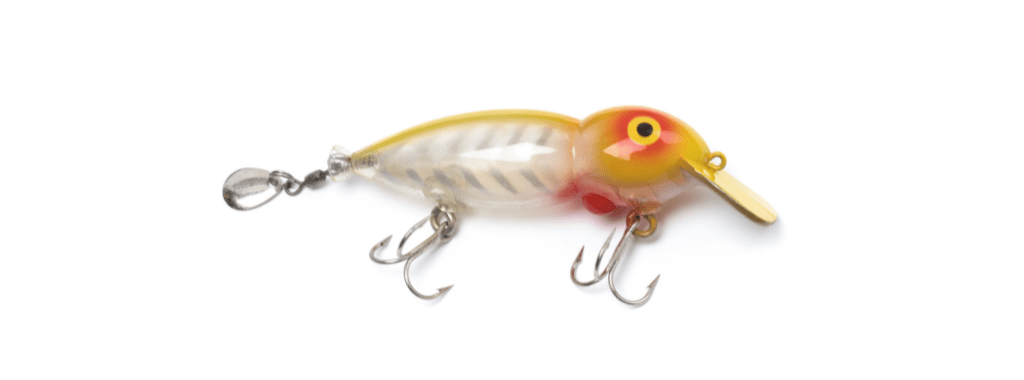
Walleye prefer long, thin fish as a food source. So having crankbaits that range from three-and-a-half to six inches in length in your tackle box is a good idea when learning how to catch walleye.
Walleye Fishing Techniques
Low light is king. The best time of the day to fish walleye is in the morning, late afternoon, or night. The fish will be feeding at these times as their exceptional vision gives them a predatory advantage that their prey can’t match.
Walleye feed in the shallows, so that’s the ideal place to toss your rigs. It may be too shallow to nose your boat up to the ideal spot (even with a trolling motor), and you’ll want to avoid disturbing them while they’re feeding.
Cast along the shoreline, as close to the bank as possible, near an island, or along the edges of a floating weed line. Floating weed beds are teeming with animals that walleye love to eat, like small perch, crayfish, and leeches.
As walleye are bottom feeders, keep your bait as close to the lake floor as you can without getting snagged.
If using artificial bait, flick your rod tip back about every thirty seconds, keeping as much slack out of your line as possible. This will make your artificial bait appear more lifelike, and the abrupt movements will draw the attention of walleye.
Don’t forget when fishing for walleye handle the fish carefully. Never hold it by the gills or tail, and make sure to watch your fingers. Walleye have sharp teeth!
Walleye: A Rewarding Catch
Fishing for walleye is a great way to spend some time out on the water.
Before you head out research what bait or lure will work best for that day’s weather and water conditions.
Don’t forget to check your local requirements for boating and fishing licenses, size, and quantity limits per angler.
Armed with the above tips on how to catch walleye, you’ll be catching these fish like never before. So grab some gear and go catch yourself a tasty dinner.

